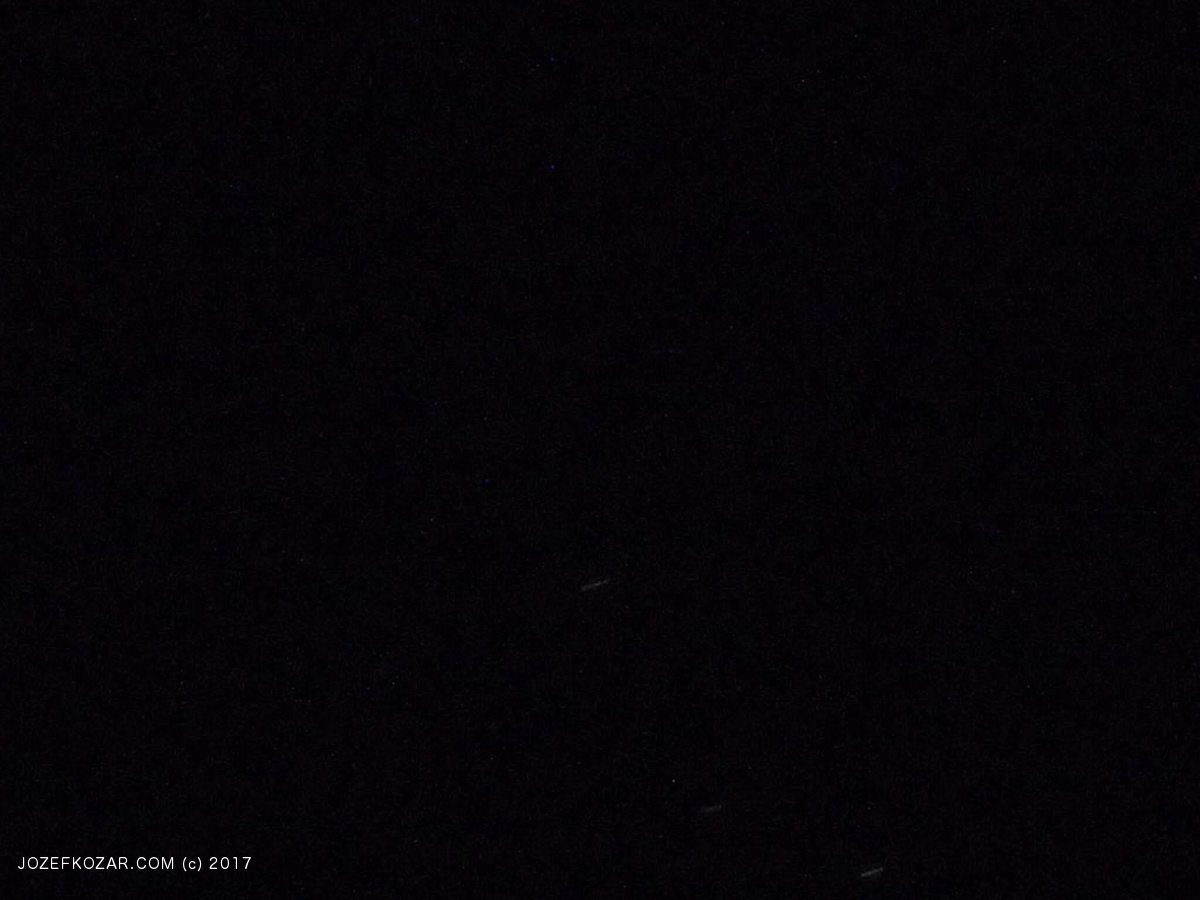Magic Jupiter and its own “planetary” system
Jupiter – the largest planet in the Solar System is specific not only because of its size, but also because of its system of moons that reminds in a some way a “mini Solar System”.
This planet is one of those that can be easily seen on the night sky. I am sure that you have seen many photographs showing this planet, but have you seen some recent photos sent by NASA’s Juno spacecraft? Take a look on some of them below.

Jupiter’s volcanically active moon Io casts its shadow on the planet. [1]

A multitude of magnificent, swirling clouds in Jupiter’s dynamic North North Temperate Belt. [1]

This image of the Jovian moon Ganymede was obtained by the JunoCam imager aboard NASA’s Juno spacecraft during its June 7, 2021, flyby of the icy moon. [1] The current research hypothesis says that there is a water ocean below the frozen crust that you can see on the picture above.
The real “extraterrestrial” sounds that you can listen to when the Juno flew by Ganymede.

Jupiter’s Great Red Spot. Have you ever seen it in a such a nice detail? [1]

“Clyde’s Spot” on Jupiter. [1]

This sequence of four images from NASA’s Juno spacecraft reveals the first views of the north polar region of Jupiter’s moon Ganymede. [1]

A giant, spiralling storm in Jupiter’s southern hemisphere is captured in this animation from NASA’s Juno spacecraft. [1]

Jupiter’s turbulent southern hemisphere. [1]

Jupiter’s stormy northern hemisphere. [1]

Image above: The left image shows a close-up of a phytoplankton blooming in the southern Gulf of Bothnia, in the Baltic Sea, between Sweden and Finland on April 14, 2019. The right image shows turbulent clouds in Jupiter’s atmosphere.
Jupiter’s atmosphere is one of the most turbulent places in the solar system. Orbiting Jupiter and its 79 moons is NASA’s Juno spacecraft, which sends images from the largest planet in our solar system back to researchers on Earth. These images from Juno have given oceanographers the raw materials to study the rich turbulence at Jupiter’s poles and the physical forces that drive large cyclones on Jupiter.
Lia Siegelman, a physical oceanographer and postdoctoral scholar at Scripps Institution of Oceanography at the University of California San Diego, observed similarities between the richness of turbulence around Jovian cyclones and the filaments around smaller eddies with turbulence seen in Earth’s oceans. [2]

Image above presents a deep dive into a Jupiter vortex. [3]

The picture above is trying to compare the size of the Jupiter’s Great Red Spot to the size of the planet Earth. [3]

The aurorae is present also on Jupiter – of course when compared to the ones that could be observed on Earth, these are different in a some way – the size of the planet Jupiter and its magnetic fields are larger in size. The picture above presents a comparison between Jupiter and Earth. [3]

All the photos and post-processed images were captured by NASA’s Juno space mission. The orbits of the Juno probe around Jupiter are also interesting. The image above displays the orbits, so you can imagine that it is not just like simply said “around”. These orbits are really complex, so the scientific instruments on board of the spacecraft can provide us as maximum data as possible. [3]
And you maybe remember the Juno space probe. Here are some details, if you need to take a look or just refresh the memory [4]:

The Juno spacecraft launched aboard an Atlas V-551 rocket from Cape Canaveral, Florida, on Aug. 5, 2011, and reached Jupiter in July 2016. The spacecraft had initially orbited Jupiter 32 times, skimmed to within 3,100 miles (5,000 kilometers) above the planet’s cloud tops, for approximately one year. Then it started to do even more magic by providing us another beautiful images and useful scientific data.
Juno uses a spinning solar-powered spacecraft in a highly elliptical polar orbit that avoids most of Jupiter’s high radiation regions. The designs of the individual instruments are straightforward and the mission does not require the development of any new technologies.
Juno’s scientific payload includes [5]:
- A gravity/radio science system (Gravity Science)
- A six-wavelength microwave radiometer for atmospheric sounding and composition (MWR)
- A vector magnetometer (MAG)
- Plasma and energetic particle detectors (JADE and JEDI)
- A radio/plasma wave experiment (Waves)
- An ultraviolet imager/spectrometer (UVS)
- An infrared imager/spectrometer (JIRAM)
Many useful details about the Juno’s mission are included in the video below. I recommend to watch it, very nice.
The spacecraft also carries a color camera, called JunoCam, to provide the public with the first detailed glimpse of Jupiter’s poles. For Juno, like NASA’s earlier Pioneer spacecraft, spinning makes the spacecraft’s pointing extremely stable and easy to control. Jupiter’s orbit is five times farther from the Sun than Earth’s, so the giant planet receives 25 times less sunlight than Earth. Juno is the first solar-powered spacecraft designed by NASA to operate at such a great distance from the sun, thus the surface area of solar panels required to generate adequate power is quite large. [5]
Very interesting is another sound below:
The explanation is in the video.
Resources (Text was partially written by me and also I used the materials provided by NASA):
[1] NASA, Juno mission database.
[2] NASA/JPL-Caltech. Left: NASA OBPG OB.DAAC/GSFC/Aqua/MODIS, Processed by Gerald EichstädtRight: NASA/JPL/SwRI/MSSS, Processed by Gerald Eichstädt.
[3] NASA, Juno mission database.
[4] Juno spacecraft and its science instruments. Image credit: NASA/JPL.
[5] NASA Juno mission overview and press kit.









